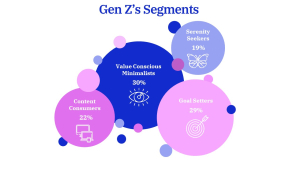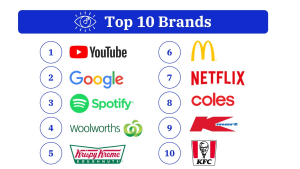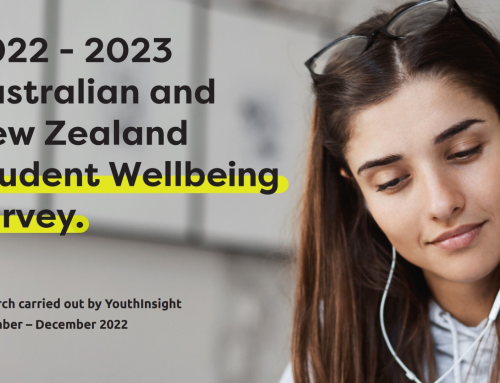As the newest generation with spending power, Gen Zs are stepping into the market landscape with a radically different set of consumption values and behaviours, prompting many companies to rethink traditional marketing strategies,
If you’ve ever struggled with connecting with Gen Zs, you may want to consider whether your brand overlooks their diversity or approaches them as a monolithic group. Gen Zs are incredibly heterogeneous by nature, both demographically and in their thoughts and opinions.
Born into an ever-evolving online world has meant that the internet has played (and continues to play) an increasingly significant role in shaping their values and behaviours. Being able to understand the nuances of these values and behaviours, and how they can differ between different subgroups among Gen Zs puts brands in a better position to reach their desired audience and gain a competitive edge.
Key insights
- Gen Zs by nature are incredibly heterogeneous – understand and embrace their diversity to keep up with them.
- Value Conscious Minimalists – the largest segment of Gen Zs are money saving enthusiasts and find joy in simple pleasures.
- Engage with this group by tapping into their love for digital content and entertainment.
From our Top 100 Youth Brands study, we identified four primary personas among Gen Zs, segmented on the basis of their consumption-related values, spending behaviours and leisure activities.

Gen Z Segmentation based on consumption values, spending habits and leisure activities
It’s important to note that these four identities are in no way exclusive – many of these personas share elements with each other, mirroring how Gen Zs enjoy the freedom of expressing all the different parts of themselves instead of choosing between one or the other. For this reason, it could be the case that your audience belongs to more than one group.
Below, we introduce the largest of the segments, the Value Conscious Minimalists, and break down the ins and outs of this persona, including their demographics, values, behaviours, spending habits and favourite brands.

Apart from having a higher representation of women (66%) and international students (12%) compared to other segments, their overall demographic profile does not dramatically differ from other segments. Their more distinctive characteristics are their core values and beliefs, which are centred around ‘living simply.’

![]()

The “Minimalist” part of their name is derived from their inclination towards simple pleasures and prioritising practical purchases. They’re not easily swayed by the hype of the latest tech and instead value devices that simply get the job done. This group also believes that luxury brands are a waste of money. Naturally, they’re also avid savers and budget users, hence “Value Conscious.”
Their indifference towards the newest devices on the market may stem from a perceived slowdown in technological innovation, particularly for mobile phones. Compared to the button-mobile days of the early 2000s a touch screen phone was revolutionary. But now that smartphones are the norm, many are feeling that the differences between existing and newly released models are becoming less discernible.
Their financially prudent habits could perhaps be driven by a desire to increase financial security, in light of rising living costs. Given that that the top concern for Gen Zs is inflation and the cost of living, it makes sense that young Australians are being more careful with their finances. Financial prudence, however, does not necessarily imply that they are financially less well-off. “Money Dysmorphia” or the phenomenon where individuals have a distorted perception of their financial situation, can make people believe they are poorer than they really are – this could potentially be at play for some Value Conscious Minimalists.
Being digital content and entertainment enthusiasts, you’ll most likely catch members of this group binge-watching their favourite movies or TV shows on a streaming service, jamming to their favourite tunes, or liking, commenting and sharing photos and videos on popular social media platforms. This group was more likely to be consuming digital content and entertainment than others.
So, what does this group spend their money on? Compared to other groups, Value Conscious Minimalists had a significantly higher proportion of individuals that spent money on necessities such as food and rent, which could again be explained by rising living costs and the desire to build financial security.

Top 10 brands, Value Conscious Minimalists
Compared to the top 10s of other segments, this shortlist contains the highest share of Quick Service Restaurants (QSR), reflecting their tendency to spend on food. Another unique outcome is that their top 3 features brands that offer free services, reinforcing the value consciousness of this group.
It’s no surprise that a streaming service, namely Netflix, secured a spot in their top 10, given this group’s affinity for digital entertainment and content consumption. However, compared to the top 10s of the other segments, this streaming brand had a comparatively lower ranking. This may signal room for improvement not just for this brand, but for the streaming industry as a whole. Alternatively, it may also mean that Value Conscious Minimalists hold higher expectations for streaming services in general, given their considerable time investment in streaming activities. Further research into these expectations can enable brands to better understand and exceed them, and as a result win higher acclaim from their users.
Value Conscious Minimalists have also voiced that they tend to favour brands that can offer a good range of products and services at competitive prices, without compromising on quality:

How Can Brands Appeal to Value Conscious Minimalists
Promoting discounts and ensuring that your products and services guarantee high value for money can help attract Value Conscious Minimalists. Given their affinity for digital content and entertainment, engaging this group through Instagram and TikTok could also be an effective strategy, as they’re more likely to follow their favourite influencers on these platforms compared to other segments.
Value Conscious Minimalists are also drawn to brands that resonate with their generation, understand their youth culture, and align with their values, namely, their desire for simplicity. Incorporating these into your brand not only allows you to become more in-sync with this dynamic group but also encourages a more authentic connection with Value Conscious Minimalists.
If you’d like to know more about how we can help you with your research needs, feel free to get in touch with us here!









Leave A Comment